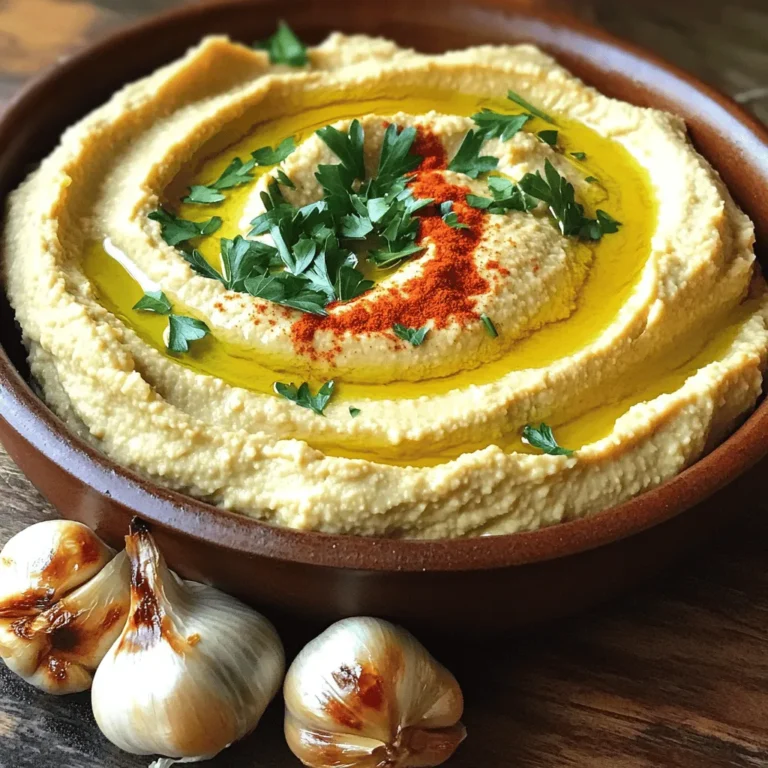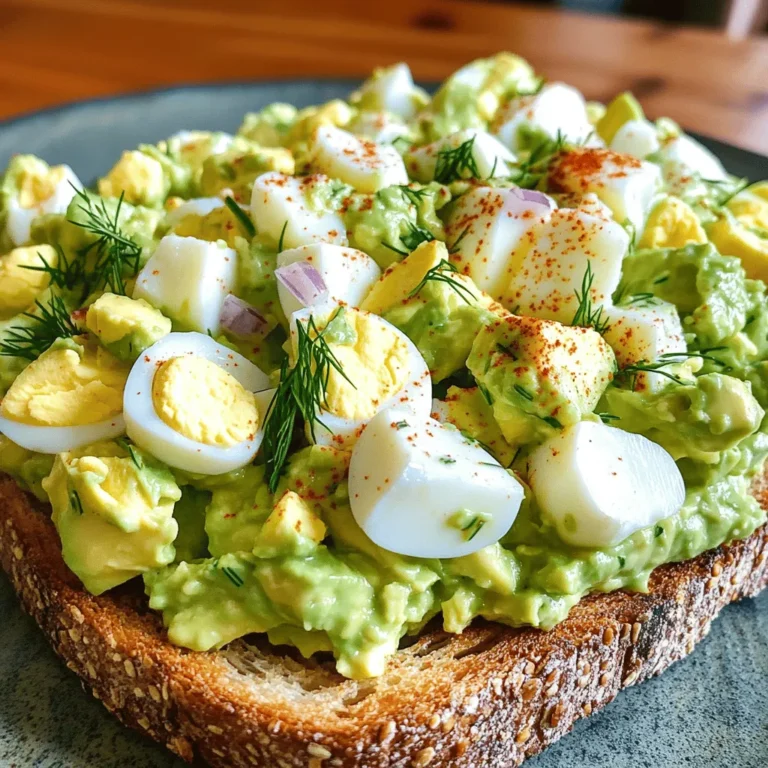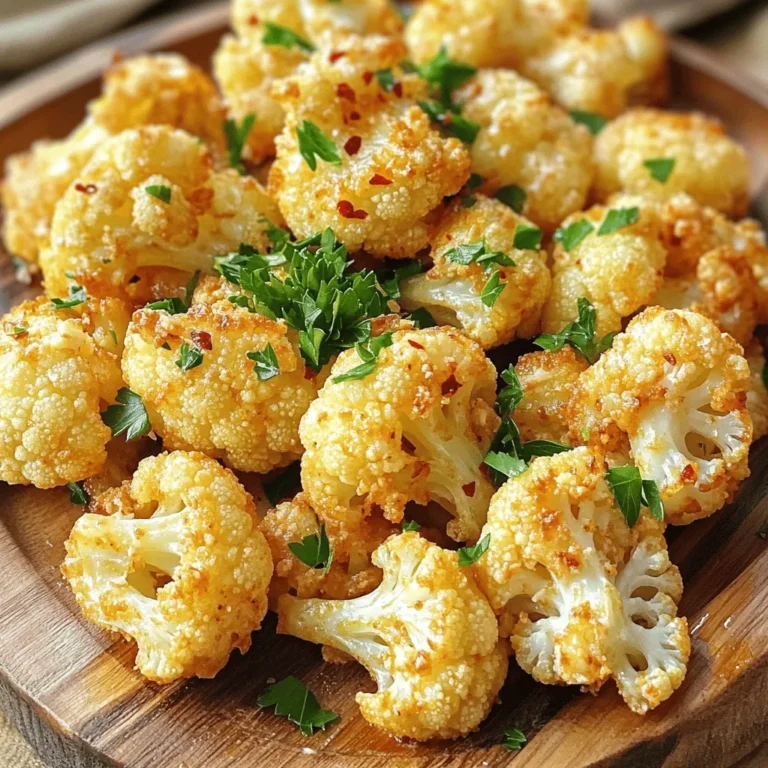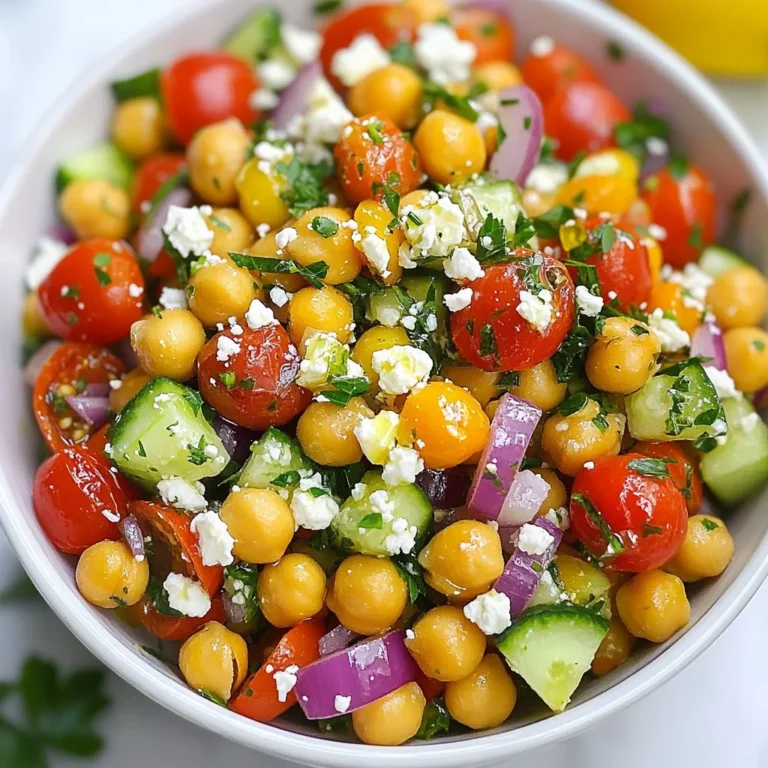Classic Caesar Salad Fresh and Flavorful Recipe Guide
![A classic Caesar salad has a few key components. First, you need fresh romaine lettuce. It adds a nice crunch. Next, croutons bring texture and flavor. You can buy them or make your own. Parmesan cheese gives a rich taste. The dressing is vital too. You need mayonnaise, Dijon mustard, and lemon juice. Garlic adds depth, while Worcestershire sauce is optional for extra flavor. Don't forget salt and pepper to enhance everything. You can add other ingredients to make your Caesar salad special. Grilled chicken or shrimp makes it a full meal. Avocado adds creaminess. For a twist, try capers or anchovies. They give a salty kick. Fresh herbs like parsley or basil can brighten the salad. These options let you customize your dish to your taste. If you're missing an ingredient, don’t worry! You can use Greek yogurt instead of mayonnaise for a lighter dressing. If you don’t have Dijon mustard, regular mustard works too. For cheese, try Pecorino Romano if you can't find Parmesan. If you're out of Worcestershire sauce, soy sauce can be a good substitute. These swaps keep your salad tasty and fresh. For the complete recipe, check out the Full Recipe. To start, you need to make the dressing. In a medium bowl, whisk together these ingredients: - 1/4 cup mayonnaise - 2 tablespoons Dijon mustard - 2 tablespoons fresh lemon juice - 1 teaspoon Worcestershire sauce (optional) - 1 clove garlic, minced - Salt and freshly cracked black pepper Mix until smooth and creamy. The dressing should have a nice tang from the lemon and mustard. Adjust the salt and pepper to your taste. If you like it zestier, add a bit more lemon juice. Next, grab a large bowl. Add the chopped romaine lettuce: - 1 large head of romaine lettuce, washed and chopped - A drizzle of olive oil Toss the lettuce gently to coat it with the oil. This step helps keep the leaves crisp. Now, pour the dressing over the lettuce and toss again. Make sure every leaf gets a good coating. Now, fold in the croutons and sprinkle: - 1 cup of croutons - 1/2 cup grated Parmesan cheese Be gentle here to keep the croutons crunchy. Taste the salad and adjust the seasoning if needed. Transfer the salad to a serving platter or individual bowls. For a nice touch, garnish with more Parmesan cheese and a sprinkle of black pepper. Serve it right away for the best crunch. If you want more ideas, try adding grilled chicken or shrimp for a heartier meal. Check out the Full Recipe for more tips! To get that perfect crunch, start with fresh romaine lettuce. Look for crisp, vibrant leaves. Wash them well, then chop them into bite-sized pieces. This helps each bite stay crunchy. Next, use good quality croutons. You can make your own by toasting bread with olive oil and garlic. This adds flavor and keeps them crunchy. Mix the croutons in just before serving. This way, they won’t get soggy. When applying dressing, less is more. Start with a small amount. Toss the salad gently to coat the leaves without bruising them. If the salad seems dry, add more dressing little by little. Always taste as you go. This lets you find the right balance for your flavor. Remember, the goal is to enhance the salad, not drown it. Taste is personal, so feel free to adjust. If you like it tangy, add more lemon juice or Dijon mustard. If you want it richer, add more Parmesan cheese. Salt and pepper are key too. A little extra can elevate the dish. Experiment with Worcestershire sauce for unique depth. This can give your salad a signature twist. {{image_4}} Adding grilled chicken or shrimp makes your Caesar salad hearty. Both options bring flavor and protein. For grilled chicken, season it with salt and pepper. Cook it until it is golden brown. Slice it thin and place it on top of your salad. For shrimp, sauté them in olive oil with garlic. Cook until they turn pink. Either choice takes your salad to the next level. If you want a veggie-packed salad, add more vegetables. Try diced bell peppers, cucumbers, or cherry tomatoes. These add crunch and freshness. You can also include roasted veggies like zucchini or asparagus for depth. This gives your Caesar salad a colorful twist. Each vegetable choice adds its own flavor, making it unique. Get creative with your ingredients for a fun twist. Consider adding avocado for creaminess. You can also sprinkle nuts like pine nuts or walnuts for crunch. Another option is to use different cheeses. Feta or blue cheese can change the flavor profile. Lastly, add a touch of hot sauce for some heat. Experimenting with these unique ingredients can make your Caesar salad exciting. For the full recipe, check out the [Full Recipe]. To keep your Classic Caesar Salad fresh, store it in the fridge. Place the salad in an airtight container. If you have leftover dressing, store it separately. This keeps the croutons crunchy and the lettuce crisp. Always add croutons just before serving. This way, they stay crunchy and not soggy. You can also wrap the lettuce in a damp paper towel. This helps the leaves stay fresh longer. When stored properly, Classic Caesar Salad lasts about 2 to 3 days. If the lettuce wilts or the croutons become soft, it’s best to toss it out. Always check for signs of spoilage before enjoying leftovers. A Caesar Salad stands out due to its unique dressing and ingredients. It typically includes romaine lettuce, croutons, and Parmesan cheese. The dressing is creamy, made with mayonnaise, mustard, lemon juice, garlic, and Worcestershire sauce. This mix gives the salad its rich flavor. The crunch of the croutons and the fresh lettuce create a delightful texture. Yes, you can make Caesar Dressing from scratch. It’s simple and rewarding. Just whisk together mayonnaise, Dijon mustard, lemon juice, garlic, and Worcestershire sauce. This homemade version tastes fresher than store-bought dressings. You can adjust flavors according to your taste. For a twist, add a bit of anchovy paste for a classic touch. Absolutely! A Caesar Salad can be made nut-free. Traditional recipes do not include nuts. Just focus on the core ingredients: romaine lettuce, croutons, and the creamy dressing. If you make your own croutons, ensure the bread you use is also nut-free. Everyone can enjoy this tasty salad without nuts. To make a Caesar Salad healthier, try these tips: - Use Greek yogurt instead of mayonnaise for the dressing. - Add more vegetables like cherry tomatoes or cucumbers for extra nutrients. - Use whole-grain croutons for more fiber. - Limit the cheese or use a lower-fat version. These changes keep the flavors while boosting the nutrition. You can find the full recipe for a Classic Caesar Salad here: Crispy Caesar Delight 🥗. This recipe guides you through making a fresh and flavorful salad that you will love. This blog post covers how to make a classic Caesar salad. We discussed key ingredients and tips for adding flavor. You learned how to prepare the dressing and toss the salad correctly. I shared storage info and answered common questions about Caesar salads. Keep experimenting with variations, whether adding protein or fresh veggies. Enjoy making your salad just right for you! Your perfect Caesar awaits.](https://goldendishy.com/wp-content/uploads/2025/06/57ecdae1-38df-4f5b-a4b6-710b22066cc6.webp)
Are you ready to master the Classic Caesar Salad? In this guide, I’ll walk you through each step to create fresh and flavorful perfection. From whipping up a creamy dressing to tossing crisp greens, you’ll find easy tips and tricks to elevate your salad. Whether you want to stick with tradition or add your unique twist, I’ll share options that will surprise and delight you. Let’s dive in!
Ingredients
Key Components of Classic Caesar Salad
A classic Caesar salad has a few key components. First, you need fresh romaine lettuce. It adds a nice crunch. Next, croutons bring texture and flavor. You can buy them or make your own. Parmesan cheese gives a rich taste. The dressing is vital too. You need mayonnaise, Dijon mustard, and lemon juice. Garlic adds depth, while Worcestershire sauce is optional for extra flavor. Don’t forget salt and pepper to enhance everything.
Optional Ingredients for Enhanced Flavor
You can add other ingredients to make your Caesar salad special. Grilled chicken or shrimp makes it a full meal. Avocado adds creaminess. For a twist, try capers or anchovies. They give a salty kick. Fresh herbs like parsley or basil can brighten the salad. These options let you customize your dish to your taste.
Ingredient Substitutions
If you’re missing an ingredient, don’t worry! You can use Greek yogurt instead of mayonnaise for a lighter dressing. If you don’t have Dijon mustard, regular mustard works too. For cheese, try Pecorino Romano if you can’t find Parmesan. If you’re out of Worcestershire sauce, soy sauce can be a good substitute. These swaps keep your salad tasty and fresh.
Step-by-Step Instructions
Preparing the Dressing
To start, you need to make the dressing. In a medium bowl, whisk together these ingredients:
– 1/4 cup mayonnaise
– 2 tablespoons Dijon mustard
– 2 tablespoons fresh lemon juice
– 1 teaspoon Worcestershire sauce (optional)
– 1 clove garlic, minced
– Salt and freshly cracked black pepper
Mix until smooth and creamy. The dressing should have a nice tang from the lemon and mustard. Adjust the salt and pepper to your taste. If you like it zestier, add a bit more lemon juice.
Tossing the Salad
Next, grab a large bowl. Add the chopped romaine lettuce:
– 1 large head of romaine lettuce, washed and chopped
– A drizzle of olive oil
Toss the lettuce gently to coat it with the oil. This step helps keep the leaves crisp. Now, pour the dressing over the lettuce and toss again. Make sure every leaf gets a good coating.
Now, fold in the croutons and sprinkle:
– 1 cup of croutons
– 1/2 cup grated Parmesan cheese
Be gentle here to keep the croutons crunchy. Taste the salad and adjust the seasoning if needed.
Serving Suggestions
Transfer the salad to a serving platter or individual bowls. For a nice touch, garnish with more Parmesan cheese and a sprinkle of black pepper. Serve it right away for the best crunch. If you want more ideas, try adding grilled chicken or shrimp for a heartier meal.
Tips & Tricks
Achieving the Perfect Crunch
To get that perfect crunch, start with fresh romaine lettuce. Look for crisp, vibrant leaves. Wash them well, then chop them into bite-sized pieces. This helps each bite stay crunchy. Next, use good quality croutons. You can make your own by toasting bread with olive oil and garlic. This adds flavor and keeps them crunchy. Mix the croutons in just before serving. This way, they won’t get soggy.
Best Practices for Dressing Application
When applying dressing, less is more. Start with a small amount. Toss the salad gently to coat the leaves without bruising them. If the salad seems dry, add more dressing little by little. Always taste as you go. This lets you find the right balance for your flavor. Remember, the goal is to enhance the salad, not drown it.
Adjusting Flavors to Taste
Taste is personal, so feel free to adjust. If you like it tangy, add more lemon juice or Dijon mustard. If you want it richer, add more Parmesan cheese. Salt and pepper are key too. A little extra can elevate the dish. Experiment with Worcestershire sauce for unique depth. This can give your salad a signature twist.
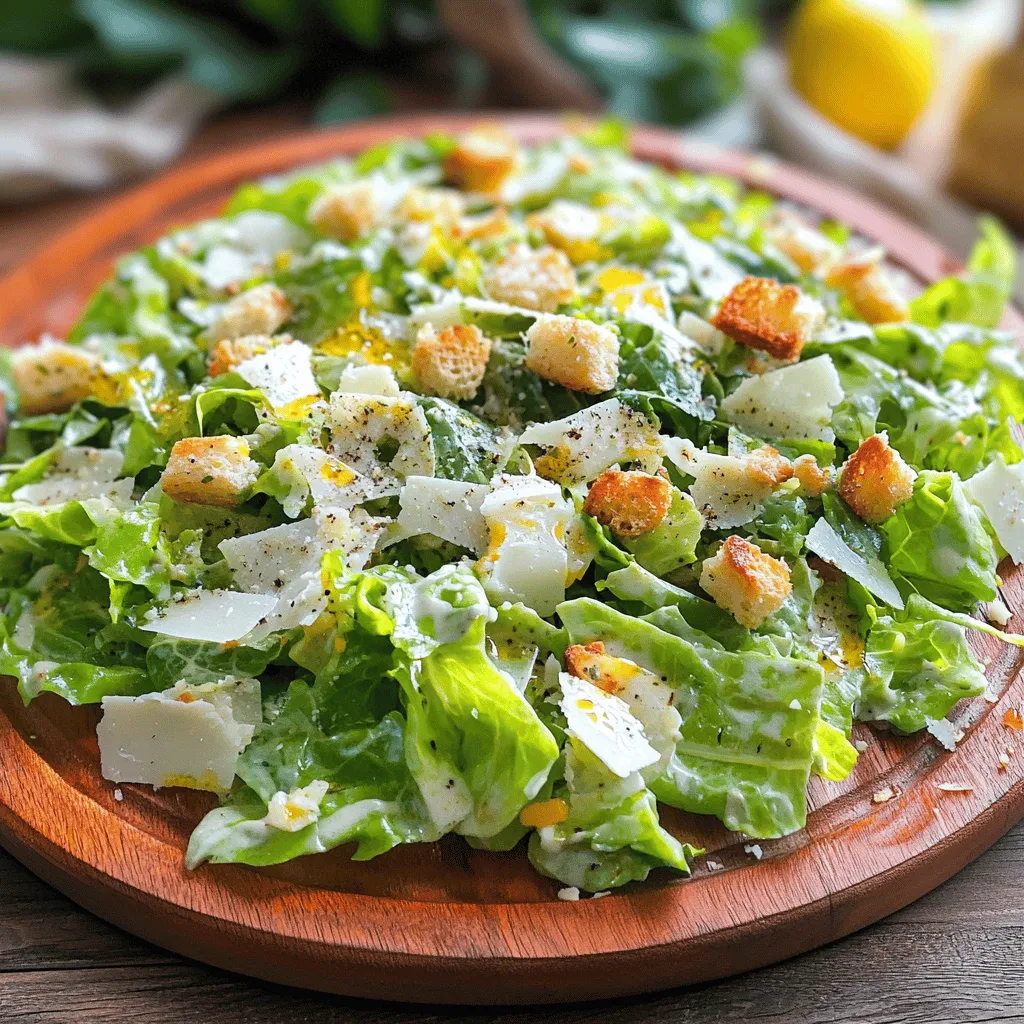
Variations
Classic Additions: Grilled Chicken or Shrimp
Adding grilled chicken or shrimp makes your Caesar salad hearty. Both options bring flavor and protein. For grilled chicken, season it with salt and pepper. Cook it until it is golden brown. Slice it thin and place it on top of your salad. For shrimp, sauté them in olive oil with garlic. Cook until they turn pink. Either choice takes your salad to the next level.
Vegetarian Options: Additional Vegetables
If you want a veggie-packed salad, add more vegetables. Try diced bell peppers, cucumbers, or cherry tomatoes. These add crunch and freshness. You can also include roasted veggies like zucchini or asparagus for depth. This gives your Caesar salad a colorful twist. Each vegetable choice adds its own flavor, making it unique.
Creative Twists: Unique Ingredients to Try
Get creative with your ingredients for a fun twist. Consider adding avocado for creaminess. You can also sprinkle nuts like pine nuts or walnuts for crunch. Another option is to use different cheeses. Feta or blue cheese can change the flavor profile. Lastly, add a touch of hot sauce for some heat. Experimenting with these unique ingredients can make your Caesar salad exciting.
Storage Info
Proper Storage for Leftovers
To keep your Classic Caesar Salad fresh, store it in the fridge. Place the salad in an airtight container. If you have leftover dressing, store it separately. This keeps the croutons crunchy and the lettuce crisp.
Best Practices for Freshness
Always add croutons just before serving. This way, they stay crunchy and not soggy. You can also wrap the lettuce in a damp paper towel. This helps the leaves stay fresh longer.
How Long Does Classic Caesar Salad Last?
When stored properly, Classic Caesar Salad lasts about 2 to 3 days. If the lettuce wilts or the croutons become soft, it’s best to toss it out. Always check for signs of spoilage before enjoying leftovers.
FAQs
What makes a salad a “Caesar Salad”?
A Caesar Salad stands out due to its unique dressing and ingredients. It typically includes romaine lettuce, croutons, and Parmesan cheese. The dressing is creamy, made with mayonnaise, mustard, lemon juice, garlic, and Worcestershire sauce. This mix gives the salad its rich flavor. The crunch of the croutons and the fresh lettuce create a delightful texture.
Can I make Caesar Dressing from Scratch?
Yes, you can make Caesar Dressing from scratch. It’s simple and rewarding. Just whisk together mayonnaise, Dijon mustard, lemon juice, garlic, and Worcestershire sauce. This homemade version tastes fresher than store-bought dressings. You can adjust flavors according to your taste. For a twist, add a bit of anchovy paste for a classic touch.
Is nut-free Caesar Salad possible?
Absolutely! A Caesar Salad can be made nut-free. Traditional recipes do not include nuts. Just focus on the core ingredients: romaine lettuce, croutons, and the creamy dressing. If you make your own croutons, ensure the bread you use is also nut-free. Everyone can enjoy this tasty salad without nuts.
How to make Caesar Salad healthier?
To make a Caesar Salad healthier, try these tips:
– Use Greek yogurt instead of mayonnaise for the dressing.
– Add more vegetables like cherry tomatoes or cucumbers for extra nutrients.
– Use whole-grain croutons for more fiber.
– Limit the cheese or use a lower-fat version.
These changes keep the flavors while boosting the nutrition.This recipe guides you through making a fresh and flavorful salad that you will love.
This blog post covers how to make a classic Caesar salad. We discussed key ingredients and tips for adding flavor. You learned how to prepare the dressing and toss the salad correctly. I shared storage info and answered common questions about Caesar salads.
Keep experimenting with variations, whether adding protein or fresh veggies. Enjoy making your salad just right for you! Your perfect Caesar awaits.
![A classic Caesar salad has a few key components. First, you need fresh romaine lettuce. It adds a nice crunch. Next, croutons bring texture and flavor. You can buy them or make your own. Parmesan cheese gives a rich taste. The dressing is vital too. You need mayonnaise, Dijon mustard, and lemon juice. Garlic adds depth, while Worcestershire sauce is optional for extra flavor. Don't forget salt and pepper to enhance everything. You can add other ingredients to make your Caesar salad special. Grilled chicken or shrimp makes it a full meal. Avocado adds creaminess. For a twist, try capers or anchovies. They give a salty kick. Fresh herbs like parsley or basil can brighten the salad. These options let you customize your dish to your taste. If you're missing an ingredient, don’t worry! You can use Greek yogurt instead of mayonnaise for a lighter dressing. If you don’t have Dijon mustard, regular mustard works too. For cheese, try Pecorino Romano if you can't find Parmesan. If you're out of Worcestershire sauce, soy sauce can be a good substitute. These swaps keep your salad tasty and fresh. For the complete recipe, check out the Full Recipe. To start, you need to make the dressing. In a medium bowl, whisk together these ingredients: - 1/4 cup mayonnaise - 2 tablespoons Dijon mustard - 2 tablespoons fresh lemon juice - 1 teaspoon Worcestershire sauce (optional) - 1 clove garlic, minced - Salt and freshly cracked black pepper Mix until smooth and creamy. The dressing should have a nice tang from the lemon and mustard. Adjust the salt and pepper to your taste. If you like it zestier, add a bit more lemon juice. Next, grab a large bowl. Add the chopped romaine lettuce: - 1 large head of romaine lettuce, washed and chopped - A drizzle of olive oil Toss the lettuce gently to coat it with the oil. This step helps keep the leaves crisp. Now, pour the dressing over the lettuce and toss again. Make sure every leaf gets a good coating. Now, fold in the croutons and sprinkle: - 1 cup of croutons - 1/2 cup grated Parmesan cheese Be gentle here to keep the croutons crunchy. Taste the salad and adjust the seasoning if needed. Transfer the salad to a serving platter or individual bowls. For a nice touch, garnish with more Parmesan cheese and a sprinkle of black pepper. Serve it right away for the best crunch. If you want more ideas, try adding grilled chicken or shrimp for a heartier meal. Check out the Full Recipe for more tips! To get that perfect crunch, start with fresh romaine lettuce. Look for crisp, vibrant leaves. Wash them well, then chop them into bite-sized pieces. This helps each bite stay crunchy. Next, use good quality croutons. You can make your own by toasting bread with olive oil and garlic. This adds flavor and keeps them crunchy. Mix the croutons in just before serving. This way, they won’t get soggy. When applying dressing, less is more. Start with a small amount. Toss the salad gently to coat the leaves without bruising them. If the salad seems dry, add more dressing little by little. Always taste as you go. This lets you find the right balance for your flavor. Remember, the goal is to enhance the salad, not drown it. Taste is personal, so feel free to adjust. If you like it tangy, add more lemon juice or Dijon mustard. If you want it richer, add more Parmesan cheese. Salt and pepper are key too. A little extra can elevate the dish. Experiment with Worcestershire sauce for unique depth. This can give your salad a signature twist. {{image_4}} Adding grilled chicken or shrimp makes your Caesar salad hearty. Both options bring flavor and protein. For grilled chicken, season it with salt and pepper. Cook it until it is golden brown. Slice it thin and place it on top of your salad. For shrimp, sauté them in olive oil with garlic. Cook until they turn pink. Either choice takes your salad to the next level. If you want a veggie-packed salad, add more vegetables. Try diced bell peppers, cucumbers, or cherry tomatoes. These add crunch and freshness. You can also include roasted veggies like zucchini or asparagus for depth. This gives your Caesar salad a colorful twist. Each vegetable choice adds its own flavor, making it unique. Get creative with your ingredients for a fun twist. Consider adding avocado for creaminess. You can also sprinkle nuts like pine nuts or walnuts for crunch. Another option is to use different cheeses. Feta or blue cheese can change the flavor profile. Lastly, add a touch of hot sauce for some heat. Experimenting with these unique ingredients can make your Caesar salad exciting. For the full recipe, check out the [Full Recipe]. To keep your Classic Caesar Salad fresh, store it in the fridge. Place the salad in an airtight container. If you have leftover dressing, store it separately. This keeps the croutons crunchy and the lettuce crisp. Always add croutons just before serving. This way, they stay crunchy and not soggy. You can also wrap the lettuce in a damp paper towel. This helps the leaves stay fresh longer. When stored properly, Classic Caesar Salad lasts about 2 to 3 days. If the lettuce wilts or the croutons become soft, it’s best to toss it out. Always check for signs of spoilage before enjoying leftovers. A Caesar Salad stands out due to its unique dressing and ingredients. It typically includes romaine lettuce, croutons, and Parmesan cheese. The dressing is creamy, made with mayonnaise, mustard, lemon juice, garlic, and Worcestershire sauce. This mix gives the salad its rich flavor. The crunch of the croutons and the fresh lettuce create a delightful texture. Yes, you can make Caesar Dressing from scratch. It’s simple and rewarding. Just whisk together mayonnaise, Dijon mustard, lemon juice, garlic, and Worcestershire sauce. This homemade version tastes fresher than store-bought dressings. You can adjust flavors according to your taste. For a twist, add a bit of anchovy paste for a classic touch. Absolutely! A Caesar Salad can be made nut-free. Traditional recipes do not include nuts. Just focus on the core ingredients: romaine lettuce, croutons, and the creamy dressing. If you make your own croutons, ensure the bread you use is also nut-free. Everyone can enjoy this tasty salad without nuts. To make a Caesar Salad healthier, try these tips: - Use Greek yogurt instead of mayonnaise for the dressing. - Add more vegetables like cherry tomatoes or cucumbers for extra nutrients. - Use whole-grain croutons for more fiber. - Limit the cheese or use a lower-fat version. These changes keep the flavors while boosting the nutrition. You can find the full recipe for a Classic Caesar Salad here: Crispy Caesar Delight 🥗. This recipe guides you through making a fresh and flavorful salad that you will love. This blog post covers how to make a classic Caesar salad. We discussed key ingredients and tips for adding flavor. You learned how to prepare the dressing and toss the salad correctly. I shared storage info and answered common questions about Caesar salads. Keep experimenting with variations, whether adding protein or fresh veggies. Enjoy making your salad just right for you! Your perfect Caesar awaits.](https://goldendishy.com/wp-content/uploads/2025/06/57ecdae1-38df-4f5b-a4b6-710b22066cc6-300x300.webp)


